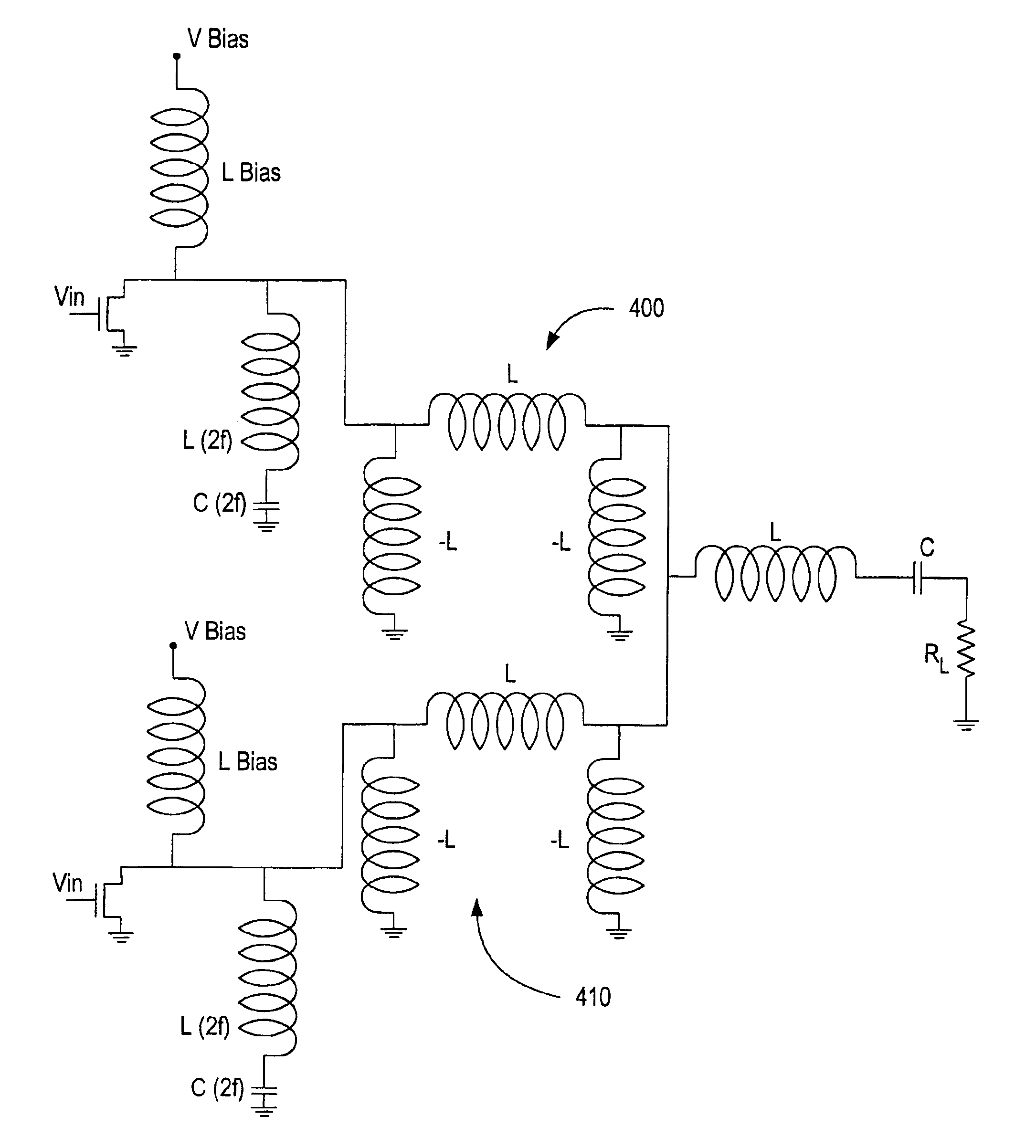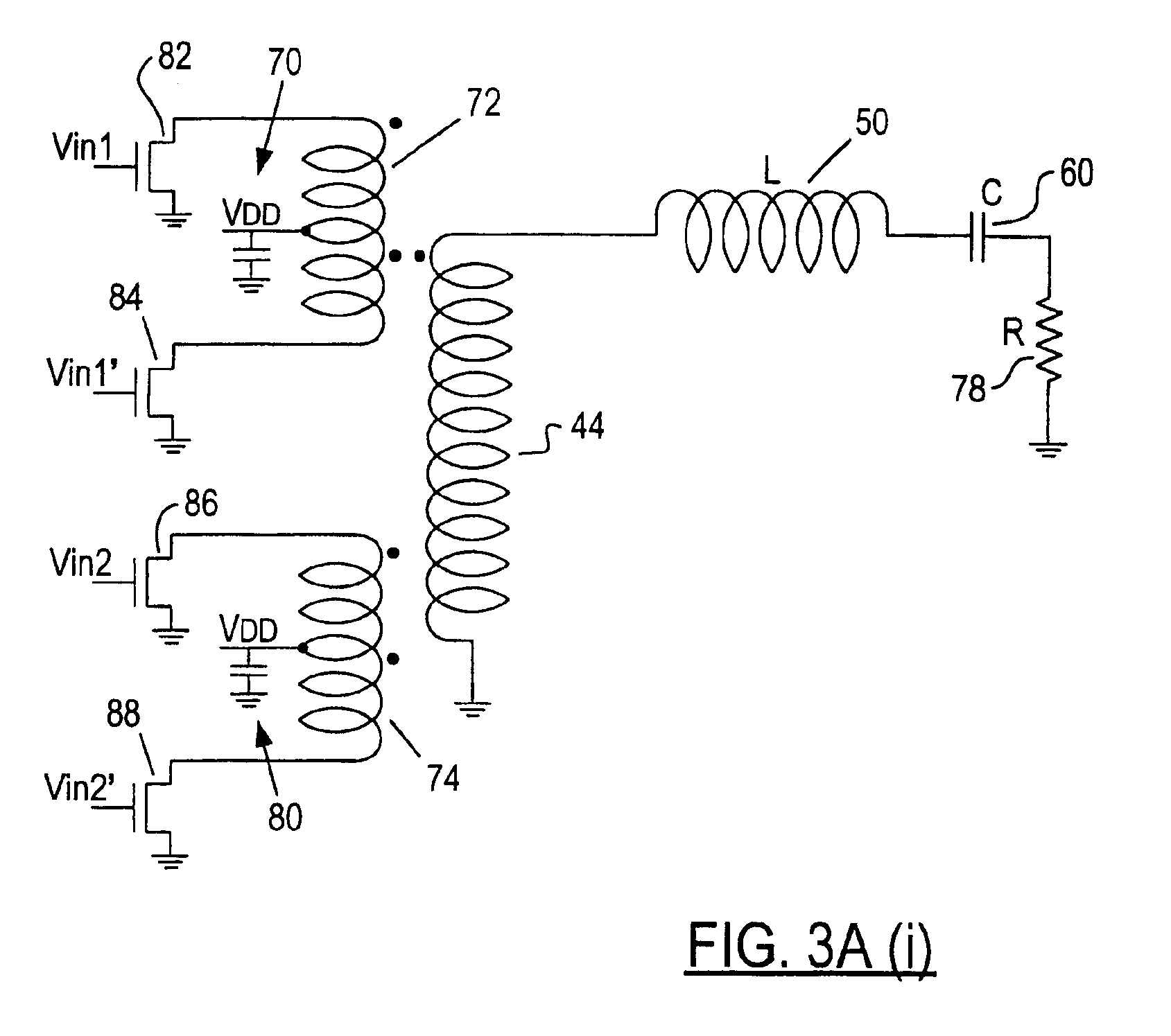Switched-mode power amplifier integrally performing power combining
a power amplifier and integrated technology, applied in the field of radio frequency circuitry, can solve the problems of non-reciprocal combiners, inherent loss and isolation limitations, and additional challenges in achieving efficiency at the amplification/combination stage, and achieve the effect of reducing the cost of amplification and combining
- Summary
- Abstract
- Description
- Claims
- Application Information
AI Technical Summary
Benefits of technology
Problems solved by technology
Method used
Image
Examples
Embodiment Construction
[0026]Surprisingly, the inventor(s) invented and developed a means for achieving improved power amplification and power combining which provides greater efficiency over the known, successively staged power amplifier and combiner designs. Advantageously, the switched-mode amplifier of the present invention integrally performs power amplification and combining of signals input thereto. According to the invention multiple input signals are combined (summed) inside the power amplifier after they are amplified and before they are applied to the resonator component of the amplifier, and hence to a load impedance. This contrasts markedly with the known power amplifiers for which power combining takes place following the complete amplification process. A known (prior art) switched-mode power amplifier is illustrated by FIG. 1 and a known (prior art) three-port power combiner (trifilar) is illustrated by FIG. 2, the configuration, manner of operation, and operating parameters and characteris...
PUM
 Login to View More
Login to View More Abstract
Description
Claims
Application Information
 Login to View More
Login to View More - R&D
- Intellectual Property
- Life Sciences
- Materials
- Tech Scout
- Unparalleled Data Quality
- Higher Quality Content
- 60% Fewer Hallucinations
Browse by: Latest US Patents, China's latest patents, Technical Efficacy Thesaurus, Application Domain, Technology Topic, Popular Technical Reports.
© 2025 PatSnap. All rights reserved.Legal|Privacy policy|Modern Slavery Act Transparency Statement|Sitemap|About US| Contact US: help@patsnap.com



